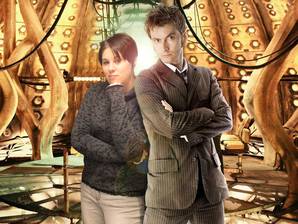For me, one of the things that make Champaign-Urbana what it is is the incredible amount of artisitic talent that exists within the community. We’re able to have people from all over the country and world, and people who live right in the community, create art across all disciplines and subjects and then share their ideas with us. I sat down with Sara Paige, a local artist and graduate student, to have her explain what interests her when making art, and what she hopes to translate through her creative process.
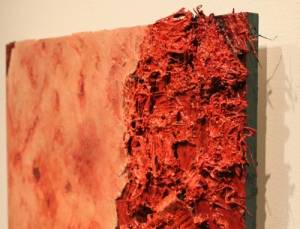 SP: So I was reading that your primary focus has been on painting, but you also do work with new media, video, etc. Have you started to transition away from painting or have you always been interested in exploring those different styles?
SP: So I was reading that your primary focus has been on painting, but you also do work with new media, video, etc. Have you started to transition away from painting or have you always been interested in exploring those different styles?
Sara Paige: It’s been a weird back and forth integration. My undergraduate program was definitely more traditional, so they didn’t really have any type of new media. While I wasn’t really exposed to new media or that type of thinking while I was in my undergraduate, it was always just a given for me when I came to the University of Illinois that I would start to explore those areas. And it’s not like I’ve completely ditched painting, I’ve actually just recently finished some new paintings, so I go back and forth between the two styles which is really nice.
SP: Is there a way that you’re able to incorporate painting and new media together?
Paige: I guess that would depend on how one thinks about painting. If you think of it as just something on a wall, then it is a bit harder to incorporate something like painting into new media, but I think there are ways in which the visual language that I’ve learned with painting has helped me with New Media. Also New Media is very broad, so it depends if you’re talking about video, or programs such as digital art. That’s also why I think my background in painting helps in certain areas, especially when it comes to things like video because I’m very aware of things like color composition. And it’s the same with installations: I have an understanding of visual concepts, how a person will see a piece, and then their interaction with the piece as the next step.
SP: So you mean how the audience member will first see the piece, and then their later interaction after the initial viewing?
Paige: I was thinking about my ideas for my thesis showing for my Master’s program, which is coming up in April in the Krannert Art Museum. When you’re in the Masters of Fine Arts program, as in any Master’s program, you have to write a thesis, but in conjunction with that we have to make a body of work, which is our research. When I’m thinking about the show, I’m thinking about if I was the person visually interacting with the work, and that’s the beginning to my ideas. And even though I can’t really understand what it’s like to interact with the piece because it’s not an actual thing yet, I think of it as seeing someone in it, or seeing it from my perspective of interaction.
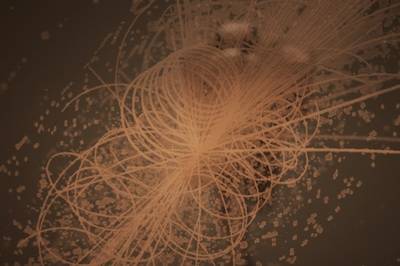
SP: I was reading that you’re interested in how people express themselves through art, or how they explore one’s inner self through art. Could you explain your ideas about that a little more?
Paige: That is definitely an over-arching theme, and in some of my older works I’m dealing with the body and the idea of the mind-body relationship, and how it constructs one’s self. So I think there’s the idea of reflecting upon one’s inner self, and some of my newer works deal with reflection too. Recently I’ve been really interested in light, and the moments when light becomes diffracted. I’m using really reflective surfaces, so there is kind of self-reflection just because the material itself is reflective. I actually got a minor in Psychology during my undergraduate degree, so ideas [about] how people think, consciousness, etc., are always on my mind. So my work, even more so now, uses the physical to also talk about metaphysics, which is kind of strange because it’s above and beyond anything any of us know. So what I’m questioning through my work is it really just physical processes that control and governs us, or is there something more going on? That also ties into my interest in the color black, and the unknown possibilities it represents.
SP: Would that make you say you also have spiritual, or perhaps transcendentalist themes in your work?
Paige: Yeah I would say there are some transcendental themes, but for me I lean more towards the spiritual aspect. I’m a practicing Christian, and I think that is tied into my work. I’m not very overt about it, but it is a part of the way that I think and how I view the world, so it’s extremely hard to separate that from how or why I make art. That’s where I think my interest in metaphysics and spirituality comes in. It’s not something I talk about a lot though because everyone has their own ideas, and it’s one of those shaky areas to talk about.
SP: But I think that’s an important aspect about art and religion, because it’s all personal, and always open to individual interpretation. I think to combine those and bring out different ideas using art and religion is really interesting, though I do understand your hesitation to talk about it because it is a sensitive topic.
Paige: Yeah and sadly there’s been some pushback in the program, not from any of my professors but from some of my peers. And it’s interesting though because if I mention Christianity it becomes “oh you’re preaching to me,” but they’re also preaching their own beliefs with their art. And really that’s what I believe art is; a reflection upon the world and then a re-telling of what you think about what you see to a larger audience.
SP: So you’re always hoping for someone to come out with their own ideas from what you’re presenting?
Paige: Oh absolutely I don’t want it to be completely didactic. Everyone brings something different that’s just going to be a given, so I don’t necessarily want someone to be like “oh this is it,” but instead have an experience and through that experience perhaps something will click for them. That’s what I’m really hoping for people to gain.
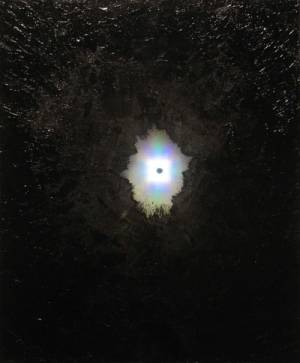 SP: You’ve just recently just installed pieces at SipYard in downtown Urbana. What is that like? Can you explain what you’ve put in for me?
SP: You’ve just recently just installed pieces at SipYard in downtown Urbana. What is that like? Can you explain what you’ve put in for me?
Paige: After I was approached about putting in an installation for SipYard, my idea turned into what I would call “shining stars”. There are about seventy strings of LED lights, and every single piece was individually hand sewn and put together. I had over twenty people help out with this project so it definitely became a communal task. Once they were sewn on they got hooked up to a micro-controller, and what I did was program the lights to come on and off at random times. It’s cool because they’ll come on really bright, but then dim down to the minimum level of light at varying speeds. It was a bit complicated because I had to make sure everything would be random and at different speeds.
SP: Are these the primary materials you work with? I know you do a lot of work with electrical materials and similar items, so is that what you’ve been focusing on or can it really be anything and everything?
Paige: Lately it’s been mostly painting and electrical materials. I also do videos, but those are relatively simple and are usually a companion part to an installation. Where I’m going for my thesis has also been more electrical centered. Unfortunately I haven’t started on the physical part of my thesis yet, because I currently don’t have the funds from the University for the materials I need. Usually every semester they have a materials grant that I would apply for, but it’s not even available yet which is stressful because it means I can’t start my work. But I’ve been doing a lot of research in the meantime about what I’ll need to get for the project, and the FabLab has helped me a lot in my research.
SP: Could you explain the FabLab a little bit more to me?
Paige: Champaign-Urbana Community FabLab is part of both the community and the University, and a lot of funding for FabLab comes from the University. Basically what it is a digital fabrication lab, and they have a lot of different stuff like 3D printers, laser printers, electronic materials, digital embroidery; pretty much anything that’s along the lines of fabrication using digital tools or newer technology. I worked there over the summer at kid’s camps, and now I just work open hours but I really enjoy the time I spend there.
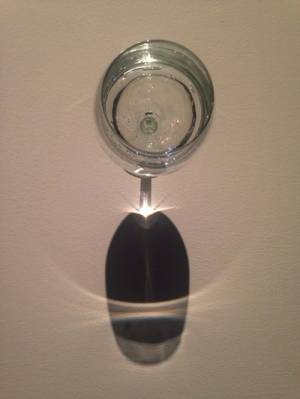 SP: So what are you personally hoping to gain from your art, or really hoping to convey to other people?
SP: So what are you personally hoping to gain from your art, or really hoping to convey to other people?
Paige: I think that’s something that can change throughout one’s art career, and I don’t want to be speaking too directly, but I think it comes down to a matter of empathy. Art for me is about our humanity, and questioning who we are and what our limits are. The idea [is] that I want you to understand the way that I see something, and I think for me that’s why I’m really interested in the intersection of art, space, and technology. I feel like sometimes these things are not as well integrated into one another as they could be, so my goal is to use the language of now, or the language of technology, to bring those together but also use them to talk about the spiritual. I’m trying to break down the area between science and art, and use technology and the language of science to talk about these bigger spiritual and physical themes and ideas. For me it’s really a way of understanding, and hopefully for someone to have an experience that lets them question: “is there something more, or is my view on a particular thing limited?” I want people to have the ability to open up and think is there more than just our physical world, or, in a sense, is there still magic.
All images courtesy of the artist. More information can be found at her website.








